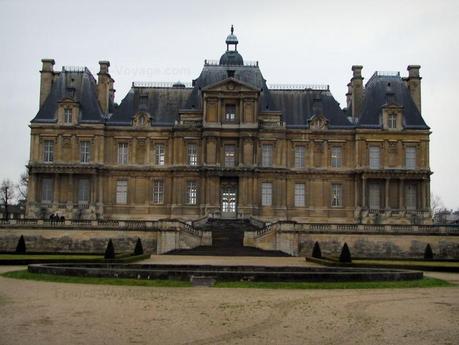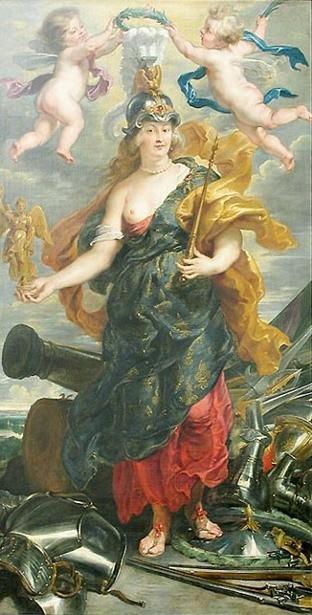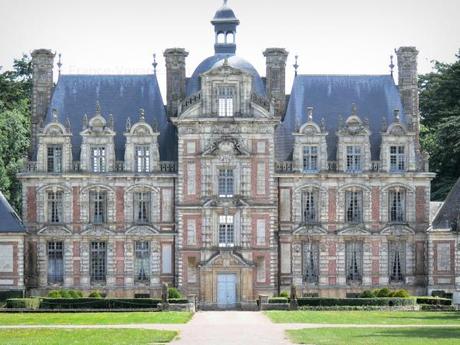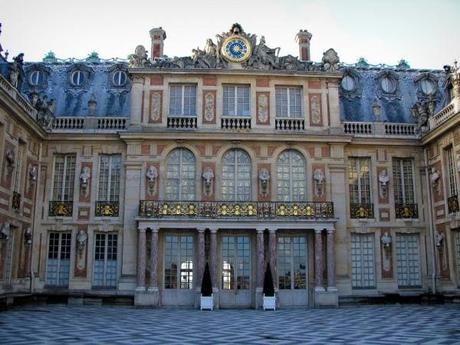Louis XIII Style
The Louis XIII style or was a fashion in French art and architecture, especially affecting the visual and decorative arts. The distinction of him as a period in the history of French art has much to do with the regency under which Louis XIII began his reign (1610-1643). His mother and his regent, Maria de Medici, imported Mannerism from Italy, where she was born. The influence of Italian art was strongly felt for several decades.
 Castle of Maisons-Laffitte
Castle of Maisons-Laffitte
Louis XIII style painting was influenced from the north, through Flemish and Dutch Baroque, and from the south, through Italian Mannerism and early Baroque. Schools developed around Caravaggio and Peter Paul Rubens. Among the French painters who mixed Italian Mannerism with a love for genre scenes were Georges de La Tour, Simon Vouet, and the Le Nain brothers.
However, the influence of painters on later generations was downplayed by the rise of classicism under Nicolas Poussin and his followers.

Louis XIII’s Architecture
Louis XIII’s architecture was equally influenced by Italian styles. The best French architect of the time, Solomon de Brosse, designed the Palais du Luxembourg for Marie de ‘Medici. De Brosse began a tradition of classicism in architecture that was continued by Jacques Lemercier, who completed the Palais and whose most famous work from the Louis XIII period is the Sorbonne Chapel (1635). Under the next generation of architects, the French Baroque would take an even greater classical change. The hunting lodge of Versailles, the future Palace of Versailles, was also designed and built, enlarged by his successor Louis XIV

The Louis XIII style in architecture is a transitional style; remains very marked by the styles of previous reigns, but continues the movement that will lead to the Classicism of the Grand Siècle. Beginning with the “second Renaissance”, architects first adopted a Mannerist formula, where scrolls, niches, sloping French ceilings, dormers, stone legs, and contrasting materials (stone, brick, slate)) enliven the buildings. The technique also evolves, the windows adorned with large protruding keys and embedded in protrusions become larger and above all gain in verticality; thus, the stone mullions, characteristic of Gothic and Renaissance architecture, are replaced by carpentry frames
Return to the Old
The search for greatness that the Renaissance fostered as a return to the old is found in these constructions. They look for the simplicity of the lines; the ancient repertoire (columns, curved pediments) becomes more monumental, as in the castle of Richelieu, Louis XIII built very little. The reign of Louis XIII was characterized by innumerable wars financed with the taxes of the French. Aware of the difficulty they had in financing all the military campaigns, the king refused to also impose the cost of the buildings. Louis XIII loved his people and was particularly affected when they suffered.
The Place des Vosges in Paris is emblematic of this double trend, charming and picturesque, strictly regular, with almost no ornaments. Inaugurated by the young Louis XIII, commissioned by his father Henry IV.

These are some of the Louis XIII style castles in France and abroad:
Castle of Beaumesnil
The castle of Beaumesnil, considered the Norman Versailles, was built between 1633 and 1640, and is an extraordinary testimony of the Louis XIII baroque style. This splendid brick and stone building, declared a Historic Monument, is adorned with sculpted elements and surrounded by moats. It is open to the public from Easter to the end of September. In addition to its beautifully furnished rooms, it houses a splendid collection of antique bindings.

Around, an 80-hectare park, designed by La Quintinie (Le Nôtre’s assistant in Versailles), with its French-style gardens, its water mirror and its boxwood labyrinth invites you to explore it.
2 Rue des Forges, Mesnil-en-Ouche – +33 2 32 44 40 09 – Chateau
Palace of Versailles
The Château de Versailles, built in the 17th century, is a masterpiece of classical art, attracting visitors from all over the world. Symbol of splendor and excess, this majestic building was during the French monarchy the scene of many historical events and important festivals.
This immense castle that has 700 rooms and 2,513 windows, was built in two main stages. The old castle, a hunting lodge that corresponds to the buildings that surround the famous Marble courtyard, was built in 1623, during the reign of Louis XIII. After coming to power, King Louis XIV ordered his architect Louis Le Vau (1661-1668) to enrich it. As this castle seemed too small to him, the Sun King again turned to his architect to enlarge it (1668-670). This part, which corresponds to the new castle, houses, as we can see today, the sumptuous Great Apartments.

Hall of Mirrors
The famous Hall of Mirrors, adorned with 357 Venetian mirrors, is in itself a masterpiece. In the 17th century, this gallery was considered a true luxury, but it was also a great change, as it offered guests the privilege of being able to see themselves in their entire body.
You can also see the Gallery of Battles, adorned with paintings that illustrate the great military events in France; the chapel dedicated to San Luis; the Great Apartments of the King and Queen and the Royal Opera House. Needless to say, a walk or bike ride through the parks is absolutely essential.

Castle of Miromesnil
The castle of Miromesnil, is located in Tourville-sur-Arques (Seine-Maritime). The current castle, built at the end of the 16th century, replaced the fortress destroyed in 1589. The rooms preserve and restore the memory of the Marquis de Miromesnil.
This beautiful Louis XIII style building surrounded by a magnificent forest of 3,500 trees some of which are 100 years old and reach a height of 40 meters. The castle, which contains two different facades in the style of Henry IV and Louis XIII, is decorated with two turrets.


Departmental Domain of Chamarande
Private Mansion of Sully
The Post Louis XIII Style – Architecture & Painting are published first on Love Decorate.. The Author is Love decorate - Love Decorate - .
